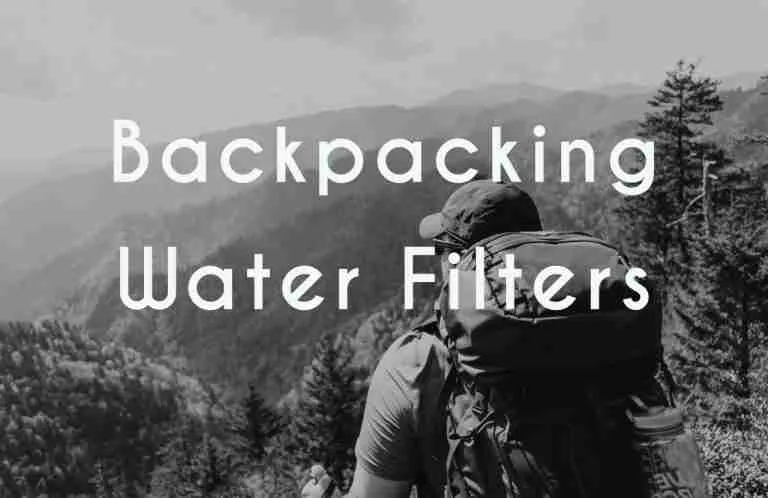Next time you’re sitting around a campfire and want to stir things up, ask your friends what they think about hiking boots vs trail runners. Things are sure to get heated (pun intended).
Backpackers, mountaineers, and trail runners alike often have strong opinions about this age-old debate.
But here at Crux Range, we don’t think there is really anything to debate. Don’t make the same mistakes as most of us and assume boots are better just because they have been around longer.
Hiking Boots vs Trail Runners: The great debate
We put out a survey to some friends and acquaintances, tabulated the responses, then patted ourselves on the back.
Why? Because everyone agreed with us: When it comes to the battle of hiking boots vs trail runners, hiking boots need to take a hike (pun also intended).
The Only Times You Need Hiking Boots
Hiking boot enthusiasts are probably throwing their ultra-light collapsible cork handled poles at the screen right now. But stick with us here (last pun, promise).
Before we get into the details of hiking boots vs shoes, we do have to admit, there’s one situation where you do need boots.
Ice Climbing And Glaciers
I mean, technically you could use a hybrid crampon like the Black Diamond Contact or the Petzl’s Irvis. In fact, these lightweight hybrid crampons are the setup Tommy Caldwell and Alex Honnold got from Rolando Garibotti during the Fitz Traverse in Patagonia.
However, it is definitely not recommended to try ice climbing with this setup. You will fail.
These crampons don’t require a toe bail or heel bail (the little grooves that click together kind of like ski boot and its binding) so you can put them on with just about any shoe you want.
Don’t get these confused with the ‘running crampons’ you see advertised for winter running. Those are just going to make things worse on any sort of technical terrain.
Personally, I have used the Grivel Air Tech hybrid crampons with trail running shoes without a problem for moderate glacial travel while mountaineering or shooting up an icy low angle couloir on the way to bag a summit.
Still, for serious ice climbing or glacier travel, you need boots.
The Hiking Boot Ankle Support Myth

Most often, people who argue in favor of hiking boots over trail running shoes use the argument that boots give you necessary ankle support.
Proponents of this theory believe that your toothpick ankles need the extra support when you are carrying a heavy backpack.
This is also the most common reason a salesperson will give you in favor or boots over shoes.
Why This Is Mostly False
True, high profile boots made with thick leather will help support your ankles—a little bit.
But, hiking boots will NOT 100% eliminate ankle twists or sprains.
In fact, most people you talk to who have sprained their ankles hiking were wearing hiking boots.
How Is This Possible?
It may seem counter-intuitive but before I stopped wearing boots I used to twist my ankles all the time.
I’m a supinator, meaning I step with the outside of my heel. This makes me more prone to ankle twisting in the first place.
Hiking boot soles are stiffer and higher off the ground. When you step, this changes your center of gravity.
To illustrate, imagine you have a champagne glass filled with water and a coffee mug filled with water; which would be easier to tip over?
Additionally, the ‘support’ of hiking boots acts like a crutch. Using a crutch all the time makes whatever you are supporting with it weaker.
So by wearing hiking boots all the time your ankles don’t have a chance to get stronger and more flexible—both things that actually help prevent ankle twisting.
Hiking Boots Are Heavy
When it comes to weight in the hiking boots vs trail runners debate there is a clear winner.
Hiking boots are heavy. The average hiking boot weighs 2 lbs. +/-, while the average trail running shoe weighs 12-30 oz.
When your feet are heavier you actually use more energy than if you were carrying more weight up top in your pack.
Weight Where It counts
Say you went on two different runs.
On the first, you wore a 20-pound backpack. For your second run you wore 2-pound weights on each ankle. Which run do you expect would be more difficult?
Most likely the one with ankle weights.
Now, if you are talking about the weight on your ankles when you’re hiking it’s even worse. Most runners go out for a quick thirty minutes to a few hours. When on a backpacking trip, people typically walk for most of the day.
So, with the heavier weight of a hiking boot you are multiplying the fatigue over thousands of steps each day.
When your legs are tired your stride changes and you become less accurate with your step. Again, making you more prone to a misstep and resulting ankle sprains.
Blisters Are For The Birds

Used to be that blisters were just par for the course. If you were a backpacker, you would have to manage blisters at some point.
Well, that’s not the case anymore. Blisters can ruin a trip and also put you at risk for infection. Why even think about a blister if you can avoid them completely?
Personally, the only time I have gotten blisters wearing trail running shoes on long hikes was between my toes on extended flat terrain.
Still, this can be avoided with two things: Shoes with a wider (more ergonomic) toe box and goofy toe socks.
Say what you want about weight and ankle support, but when it comes to avoiding blisters in the great hiking boots vs trail runners debate; trail running shoes are the winners by a mile.
Nothing Is Waterproof
Even rocks, giant granite stones, are not waterproof. With enough time water can permeate anything.
The same goes for hiking boots.

Sure, with a brand new pair of boots you can slop around in the stream without getting your feet wet.
But over time the material on your boots breaks down. It gets small creases and cracks, the waterproof chemical strips away, the soles separate ever so slightly.
Soon your once super boots are leaving areas of your feet damp and cold.
Additionally, even if you are wearing gaiters, in a long downpour the water is going to run down your legs into your boots anyway.
Clammy Feet Are Not Happy Feet
The problem with wet boots is two-fold.
One, boots are made of heavy materials that take a long time to dry. This means your feet will now be even heavier due to the added water weight that your hiking boots absorbed.
Worse, this means that your feet are going to be damp for while; all leading to a higher likely hood of skin breakdown and resulting blisters.
Two, boots don’t let your feet breathe. Whether they are wet from the rain or from your own feet sweating inside, the built-up moisture is trapped in your boot right alongside your feet.
When your feet do get wet they stay wet. That trapped moisture makes your skin weaker and more prone to blisters and breakdown.
Tip: Because they are so light, I always bring two pairs of trail runners with me on long hikes. I keep one pair in my pack or under the top flap so they stay dry. If your main shoes get wet, just tie them on the outside of your pack (take the insoles out too-they will dry faster) and throw on your back up pair. Depending on material and weather, trail shoes can fully dry in a day or two.
Cost
Here’s the kicker, hiking boots are usually much more expensive than trail running shoes.
Why would you spend so much money on a pair of torture-boots when you could hike in comfort for near half the price?
Comparison Price And Weight
One of the best and highest rated hiking boots is the Asolo Fugitive GTX. Let’s compare that with a trail running shoe popular with through-hikers; the Altra Lone Peak 4.


Even Soldiers Are Switching
Still not convinced? I will leave you with one last antidote.
These shoes, the Vasque Juxt (self-proclaimed multi-sport shoe) were the shoes worn by the Navy SEALs that took down Bin Laden.
The military, one of the most regimented tradition-oriented organizations in existence, has even started phasing out boots.
Elite soldiers and special forces operators have to cover a lot of distance in variable terrain all while carrying heavy loads.
And today they opting for these lightweight trail running shoes over boots.
Summing It Up
Whether you are deciding on backpacking in running shoes or hiking boots, or have been trapped by the ankle support myth, I encourage you to give trail runners a try.
Trail running shoes are lighter, less prone to blistering, dry quicker, allow your ankles to get stronger, and cost less.
Your feet will stay dry and comfy and your checkbook will thank you.
Hiking boots vs trail runners… What do you think?





